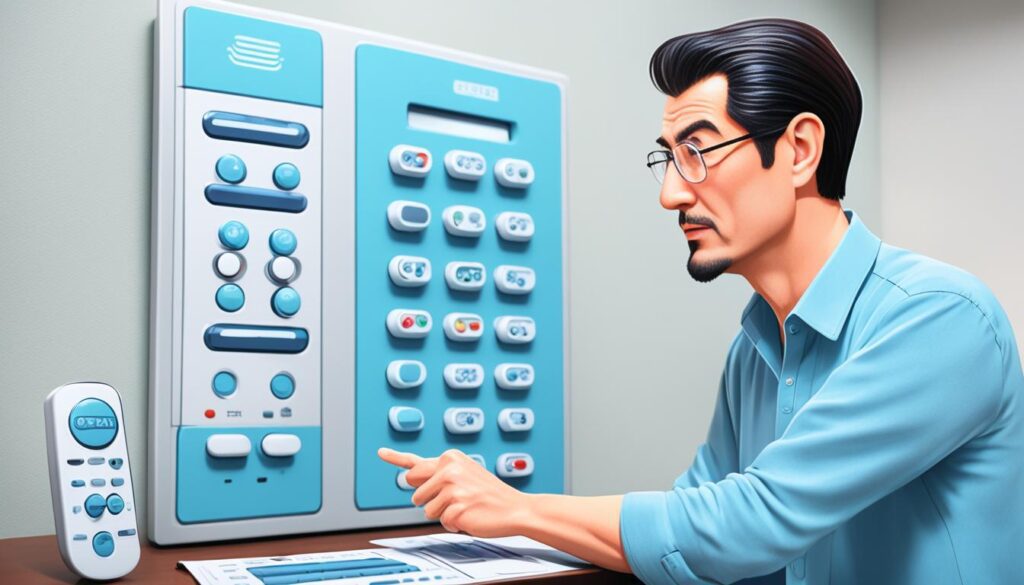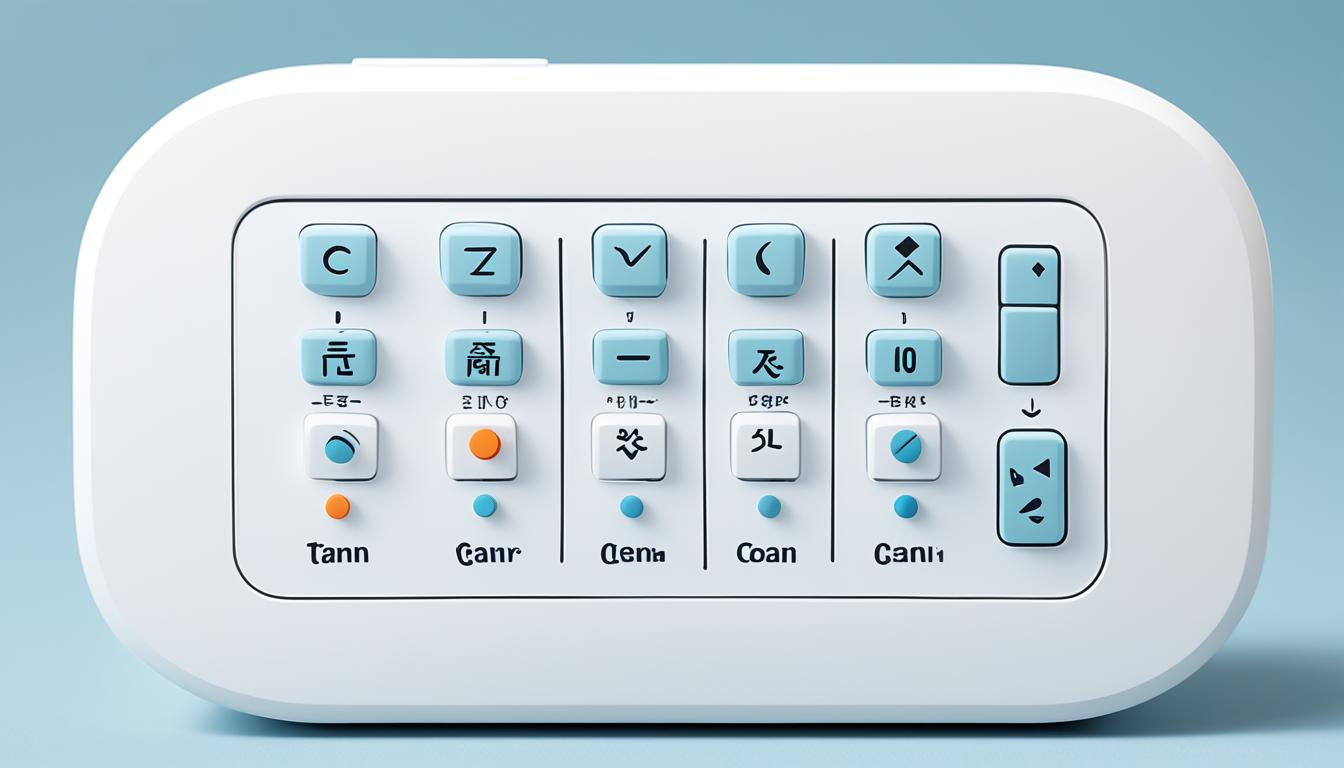In Japan, air conditioners are a common feature in residences, providing relief from the sweltering heat and humidity of summer as well as the cooler winter months. Understanding the remote control settings and functions of Japanese air conditioners can be challenging, especially for non-Japanese speakers. This quick translation guide will help you navigate the various settings and modes, enabling you to use your air conditioner to its full extent.
When it comes to translating the word “cooling” to Japanese, the term you can use is 冷却 (reikyaku). This term refers to the process of cooling or the act of lowering the temperature. Additionally, the Japanese term for air conditioning is 冷房 (reibou), which encompasses cooling and maintaining a comfortable indoor temperature.
Pronunciation: In Japanese, the pronunciation of 冷却 is “rei-kyaku” and 冷房 is “rei-bou”.
Equivalent Words: Apart from 冷却 and 冷房, you can also use the word 冷やす (hiyasu) to convey the concept of cooling or chilling something. This word can be used in various contexts, such as cooling drinks or chilling food.
Writing in Kanji: 冷却 is written as 冷却 in kanji characters, and 冷房 is written as 冷房.
Contextual and Cultural Usage: In Japan, cooling is an essential aspect of daily life, especially during the hot and humid summer months. Air conditioners are commonly used in homes, offices, and public spaces to provide a comfortable indoor environment. Understanding the terminology related to cooling in Japanese is helpful when using air conditioning systems and discussing temperature control. It is important to note that Japan is known for its advanced air conditioning technology and efficient cooling systems, making it a comfortable place to stay even during extreme weather conditions.
Translating the Remote Control for Your Japanese Air Conditioner
The remote control of a Japanese air conditioner typically has settings and functions that are similar to wall-mounted air conditioners in other countries. However, the setting labels are in Japanese, making it difficult to understand for non-Japanese speakers. Here are some of the main settings and functions commonly found on a Japanese air conditioner remote control:
| Japanese Label | Translation |
|---|---|
| 運転 | Power On/Off |
| 温度 | Temperature Control |
| 風量 | Fan Speed |
| 運転モード | Operation Mode |
| タイマー | Timer |
| 内部クリーン | Self-Cleaning |
Understanding these key translations can help you navigate the remote control of your Japanese air conditioner more easily. However, it’s important to refer to your specific air conditioner’s user manual for detailed instructions and to understand any additional functions that may be specific to your model.
Different Modes
Japanese air conditioners offer various modes of operation that can be beneficial in different seasons. Understanding these modes will help you make the most of your Japanese air conditioner.
During the hot summer months, the cooling mode is commonly used to provide relief from the heat. This mode adjusts the temperature and fan speed to create a comfortable indoor environment. It’s perfect for when the temperatures soar and you need a cool retreat.
If you live in a region with high humidity, the dehumidifying mode is a handy feature. It helps reduce excess moisture in the air, preventing mold growth and creating a more comfortable environment. This mode is especially useful during the rainy season or in coastal areas.
During the colder winter months, the heat mode is your go-to option. It quickly warms up your room, providing cozy comfort even when it’s freezing outside. Just set the desired temperature, and your air conditioner will work its magic.
Many Japanese air conditioners also come with an eco mode to help minimize energy consumption. This mode adjusts the temperature and fan speed to optimize efficiency, reducing electricity costs while maintaining a comfortable indoor climate.
Customizing Your Comfort
Depending on the model of your air conditioner, you may have additional modes and functions to choose from. Some common options include:
| Mode | Description |
|---|---|
| Auto mode | This mode automatically selects the best settings based on the room temperature, ensuring optimal comfort without constant adjustments. |
| Night mode | In this mode, the air conditioner adjusts the temperature and fan speed to create a quieter and more conducive environment for sleep. |
| Fan mode | Use this mode to circulate air in the room without adjusting the temperature. It can be useful on mild days when you just need a gentle breeze. |
Exploring these different modes and functions will help you cater your air conditioner’s performance to your specific needs and preferences, ensuring a comfortable and enjoyable living space regardless of the weather outside.
Cleaning and Maintenance
Regular cleaning and maintenance of your air conditioner is crucial to ensure its optimal performance and longevity. By following these simple tips, you can keep your Japanese air conditioner running smoothly:
1. Filter Maintenance
One of the most important maintenance tasks is to clean or replace the filters regularly. Dirty filters can restrict airflow and reduce the cooling efficiency of your air conditioner. Consult the manufacturer’s instructions to locate and remove the filters. Rinse them with water or use a vacuum cleaner to remove dust and debris. If the filters are damaged or worn out, replace them with new ones.
2. Wipe Down the Interior
To prevent dust buildup inside the unit, use a soft cloth to carefully wipe down the interior surfaces. Pay special attention to the evaporator coils and condensate tray. Removing dust and debris will improve the overall performance of your air conditioner.
3. Exterior Cleaning
Wipe down the exterior of your air conditioner using a clean cloth dampened with mild soap and water. This will remove any dirt, grime, or fingerprints that may have accumulated. Avoid using harsh chemicals or abrasive materials that could damage the unit.
4. Self-Cleaning Mode
Some Japanese air conditioners come equipped with a convenient self-cleaning mode. This function helps eliminate moisture and reduce the growth of mold and bacteria inside the unit. Refer to your air conditioner’s user manual to activate the self-cleaning mode if available.
5. Professional Cleaning Services
If you prefer a thorough cleaning or encounter any difficulties, consider hiring professional cleaning services. They have the expertise and tools to clean hard-to-reach areas and ensure your air conditioner is free from dirt and pollutants.
6. Professional Repairs
In case of any malfunctions or issues with your air conditioner, it is advisable to consult a professional repairman or contact the manufacturer for assistance. Attempting repairs without proper knowledge or experience can potentially damage the unit further.
By following these cleaning and maintenance tips, you can keep your Japanese air conditioner in optimal condition and enjoy its cooling benefits for years to come.
More Ways to Beat Japan’s Summer Heat
Air conditioning plays a crucial role in staying comfortable during Japan’s hot and humid summers. However, there are other strategies you can employ to cope with the scorching temperatures and make the most of your time in Japan. Here are some tips for staying cool:
- Stay hydrated: Drink plenty of water throughout the day to stay hydrated and prevent heat-related illnesses.
- Wear light and breathable clothing: Opt for loose-fitting and breathable fabrics like cotton or linen to allow air circulation and keep your body temperature down.
- Use fans: Portable fans or handheld fans can provide instant relief by creating a breeze and helping evaporate sweat.
- Seek shade: When outdoors, find shaded areas to protect yourself from direct sun exposure and reduce the risk of heatstroke.
By following these tips and using your air conditioner effectively, you can beat the heat and enjoy all that Japan has to offer during its summer months.
Translation of Japanese Air-Conditioner Remote Buttons

The buttons on a Japanese air conditioner remote control can be quite daunting to understand, especially if you’re not familiar with the Japanese language. The labels are often written in kanji and katakana, making it challenging for non-Japanese speakers to decipher their meanings. To help you navigate your Japanese air conditioner remote control, here are translations of common labels you may encounter:
| Button Label | Translation |
|---|---|
| 冷房 | Cooling |
| 暖房 | Heating |
| 自動 | Auto |
| 除湿 | Dehumidifying |
| 送風 | Fan |
| 運転切 | Power On/Off |
| 温度 | Temperature |
| 風量 | Fan Speed |
| タイマー | Timer |
These translations should help you better understand the functions and settings on your Japanese air conditioner remote control. By familiarizing yourself with these labels, you’ll be able to adjust the settings according to your preferences and enjoy a comfortable indoor environment.
**Note**: The table above provides translations for common labels found on Japanese air conditioner remote buttons. It is essential to consult your air conditioner’s user manual for precise translations and to fully understand the functionality of your specific model.
Remote Control Basics and Additional Functions
Controlling your Japanese air conditioner is made easy with the remote control that comes with it. Typically located near the unit or mounted on a wall, the remote control allows you to adjust the settings and functions with convenience. Start by familiarizing yourself with the basic buttons. The power button is labeled 運転 (unten), which means “on” or “start,” and 停止 (teishi), which means “off” or “stop.”
When it comes to setting the desired temperature, look for the 温度 (ondo) buttons. These buttons enable you to increase or decrease the temperature according to your comfort. However, your Japanese air conditioner may have more to offer. Take advantage of additional functions such as the timer (タイマー), which allows you to set specific operating hours for your air conditioner.
Some air conditioners also come with helpful features like a self-cleaning setting (内部クリーン) that keeps the unit clean and maintains its performance. Another notable function is the clothes drying setting (衣類乾燥), which utilizes the air conditioner to dry your clothes efficiently. Exploring and understanding these additional functions will enhance your experience with your Japanese air conditioner, giving you more control and convenience.

